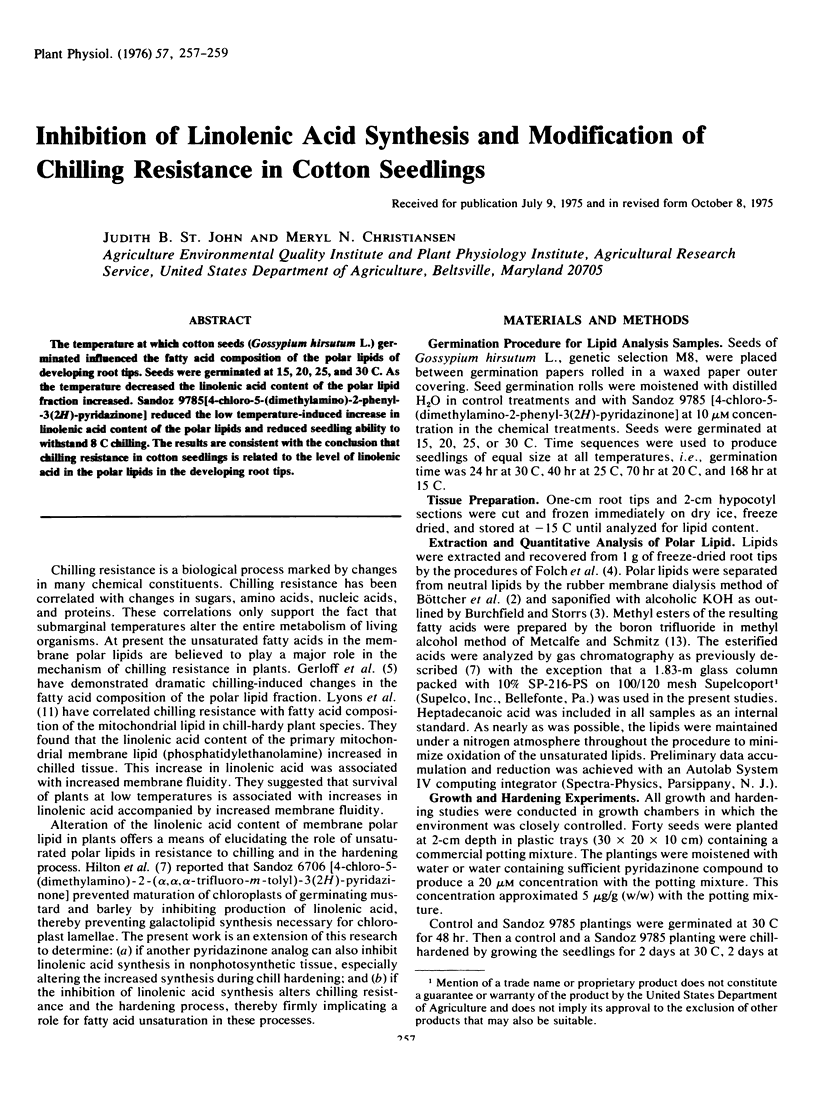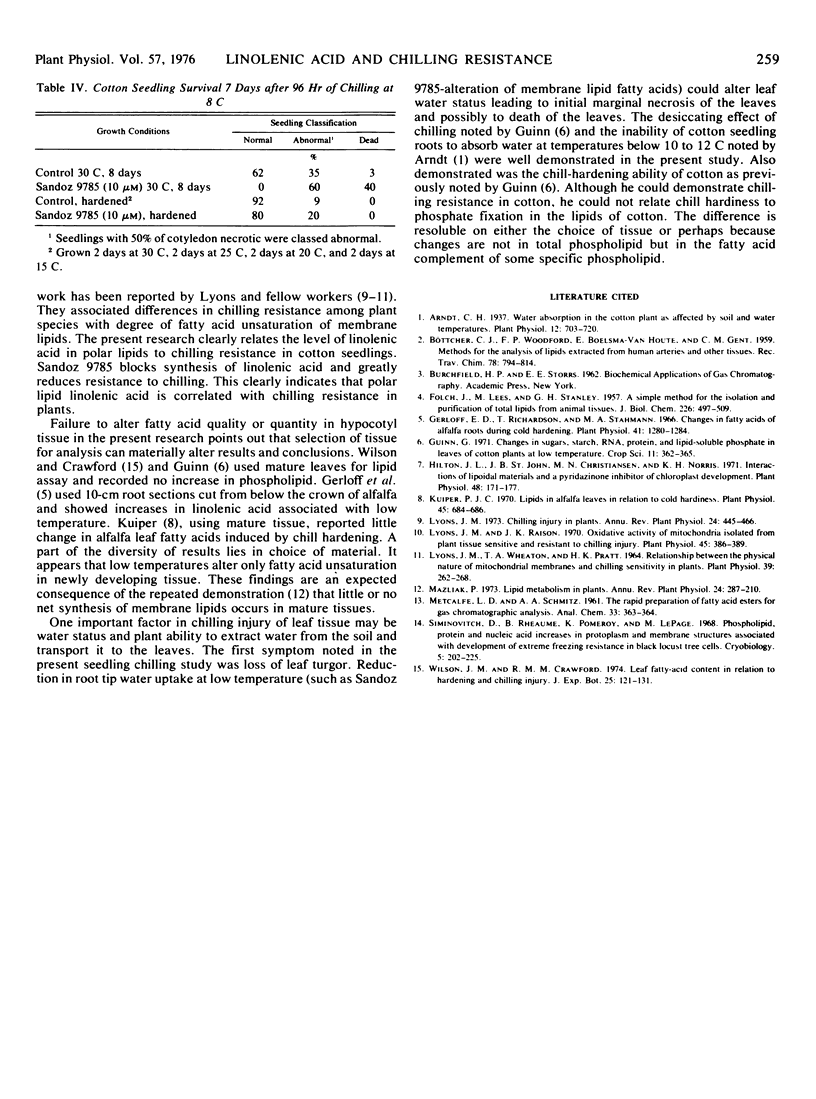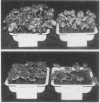Abstract
The temperature at which cotton seeds (Gossypium hirsutum L.) germinated influenced the fatty acid composition of the polar lipids of developing root tips. Seeds were germinated at 15, 20, 25, and 30 C. As the temperature decreased the linolemic acid content of the polar lipid fraction increased. Sandoz 9785[4-chloro-5-(dimethylamino)-2-phenyl-3(2H)-pyridazinone] reduced the low temperature-induced increase in linolenic acid content of the polar lipids and reduced seedling ability to withstand 8 C chilling. The results are consistent with the conclusion that chilling resistance in cotton seedlings is related to the level of linolenic acid in the polar lipids in the developing root tips.
Full text
PDF


Images in this article
Selected References
These references are in PubMed. This may not be the complete list of references from this article.
- Arndt C. H. WATER ABSORPTION IN THE COTTON PLANT AS AFFECTED BY SOIL AND WATER TEMPERATURES. Plant Physiol. 1937 Jul;12(3):703–720. doi: 10.1104/pp.12.3.703. [DOI] [PMC free article] [PubMed] [Google Scholar]
- FOLCH J., LEES M., SLOANE STANLEY G. H. A simple method for the isolation and purification of total lipides from animal tissues. J Biol Chem. 1957 May;226(1):497–509. [PubMed] [Google Scholar]
- Hilton J. L., John J. B., Christiansen M. N. Interactions of lipoidal materials and a pyridazinone inhibitor of chloroplast development. Plant Physiol. 1971 Aug;48(2):171–177. doi: 10.1104/pp.48.2.171. [DOI] [PMC free article] [PubMed] [Google Scholar]
- Kuiper P. J. Lipids in alfalfa leaves in relation to cold hardiness. Plant Physiol. 1970 Jun;45(6):684–686. doi: 10.1104/pp.45.6.684. [DOI] [PMC free article] [PubMed] [Google Scholar]
- Lyons J. M., Raison J. K. Oxidative activity of mitochondria isolated from plant tissues sensitive and resistant to chilling injury. Plant Physiol. 1970 Apr;45(4):386–389. doi: 10.1104/pp.45.4.386. [DOI] [PMC free article] [PubMed] [Google Scholar]
- Lyons J. M., Wheaton T. A., Pratt H. K. Relationship between the Physical Nature of Mitochondrial Membranes and Chilling Sensitivity in Plants. Plant Physiol. 1964 Mar;39(2):262–268. doi: 10.1104/pp.39.2.262. [DOI] [PMC free article] [PubMed] [Google Scholar]
- Siminovitch D., Rheaume B., Pomeroy K., Lepage M. Phospholipid, protein, and nucleic acid increases in protoplasm and membrane structures associated with development of extreme freezing resistance in black locust tree cells. Cryobiology. 1968 Nov-Dec;5(3):202–225. doi: 10.1016/s0011-2240(68)80164-6. [DOI] [PubMed] [Google Scholar]



